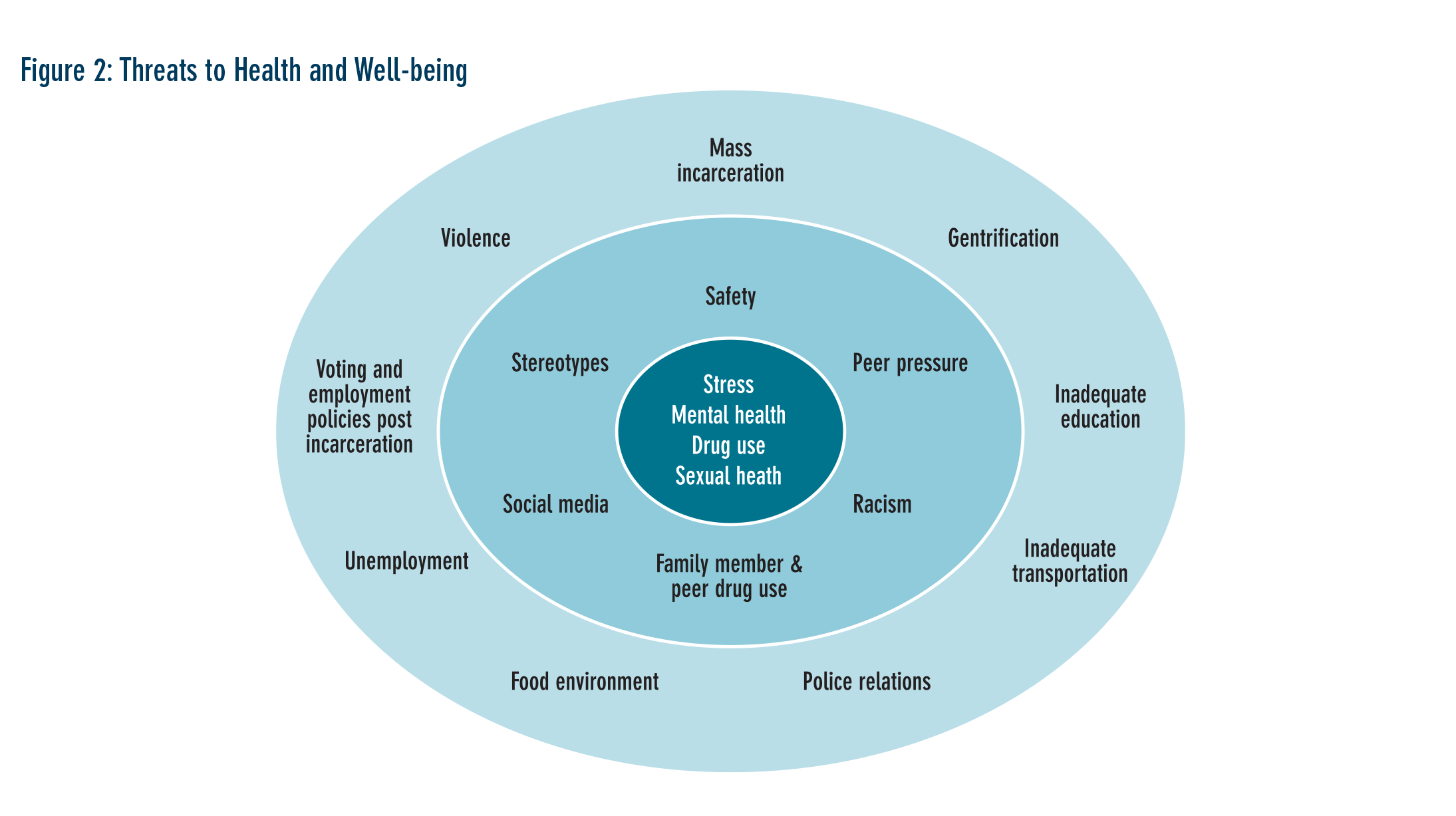WASHINGTON — When teams of youth researchers — including youth themselves — from five cities set out to find what helps and what prevents their peers from achieving health and wellness, each group came up with their own ways of gathering and analyzing data.
But they all arrived at similar findings about which barriers prevent young people of color in their communities from thriving: a sense of fear about their safety and futures.
Across the cities, young people — most of whom were ages 16 to 19 and identified as black or African-American — reported they feel under stress because of employment concerns, poor race relations, violence and a lack of community resources. And they said they engage in risky behaviors to combat that stress.
They also said they feel unsafe, mistrust and fear police, and do not feel welcome in their communities because of stereotypes and racial profiling, says a new report on the study’s findings from the Center for Promise, the research institute of America’s Promise, a national partnership dedicated to improving the lives of youth.
“Overall, the findings indicate that young people are living with pervasive stress. They are living under siege — over-policed, undervalued, and marginalized. They don’t feel safe in their schools or in their communities,” the report said.
The study, funded by Target, looked at young people’s experiences in Boston, Chicago, Denver, Philadelphia and St. Paul, Minnesota.
Young people of color are the fastest-growing youth population in the United States. And they, along with their peers in low-income communities, are at high risk for experiencing poor health outcomes. It’s essential to figure out how to improve their outcomes, for their own health and for larger communities, the researchers said.
“Inequitable health outcomes for youth of color are an old problem in need of new thinking,” Jonathan Zaff, executive director of the Center for Promise, said in a news release. “Many young people of color in the study cite feeling over-policed, undervalued and unsafe in their own communities as barriers to wellness. These feelings often stem from pervasive stress and trauma associated with a lack of access to high-quality nutritious foods and medical care and concerns of racial discrimination that can lead to risky behaviors and a distrust of institutions. The result is entire generations growing up in constant fear, which affects their lives and can limit their potential in so many ways.”

Youth-led research
The study didn’t just ask youth for their input; it engaged them in conducting research with help from university-based researchers.
Youth-led research is critical because it recognizes that youth are the experts on their own lives, said Linda Sprague Martinez, assistant professor of social work at Boston University and lead author of the study. They know the conditions in their communities, as well as how to talk to their peers in ways that adults may not understand.
“If we’re not working with communities and recognizing community knowledge, we’re not going to develop interventions that meet communities where they’re at,” she said.
The study’s research methods — predominantly surveys — are not based on a random sample, so the findings must be taken as exploratory, but they point the way to important, additional research questions. Wellness is often about lifestyle change and health behaviors, Sprague Martinez said. But the young people’s results highlighted how social experiences also play a role.
“They tell a powerful story that’s different than we’ve been telling about wellness,” she said.
Youth-led research is something many youth-serving organizations could consider incorporating into their work, Sprague Martinez added. Organizations will need willing partners to help youth learn about and conduct research, but young people are ready to take the lead if given a chance.
“They rise to the challenge. It’s a skill set like any other skill set and it can be taught,” she said.
Dy’Mon Pendleton, 18, was on the research team in Philadelphia. The work showed her the value of understanding young people’s experiences and encouraged her to look for ways to contribute to similar projects in her future.
“The teens understand what’s going on their community and we know how to talk to each other,” she said.
Pendleton said she hopes the report will encourage communities to think about how to collectively put an end to the violence, police brutality and stereotyping that hurt youth.
“One person can’t do it on their own. We all have to support one another,” she said.































